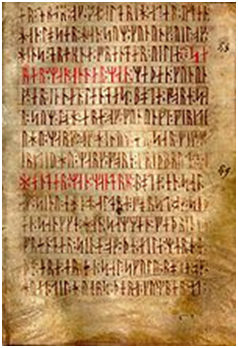This week
members of my Ward, Sierra Vista Ward, visited our house twice with Christmas Songs.
It reminded me of a story that was found in Family Search concerning the last
Christmas of the Prophet and his brother and how our ancestors serenaded the
Prophet Joseph and Hyrum Smith’s households early Christmas morning.
A Christmas Serenade – Taken from Joseph Smith’s Journal
“Monday,
25.—This morning, about one o’clock, I was aroused by an English
sister, Lettice Rushton, widow of Richard Rushton, Senior, (who, ten years ago,
lost her sight,) accompanied by three of her sons, with their wives, and her
two daughters, with their husbands, and several of her neighbors, singing,
“Mortals, awake! with angels join,” &c., which caused a thrill of pleasure
to run through my soul. All of my family and boarders arose to hear the
serenade, and I felt to thank my Heavenly Father for their visit, and blessed
them in the name of the Lord. They also visited my brother Hyrum, who was
awakened from his sleep. He arose and went out of doors. He shook hands with
and blessed each one of them in the name of the Lord, and said that he thought
at first that a cohort of angels had come to visit him, it was such heavenly
music to him.”
Several events made this Christmas of 1843 special to the Prophet Joseph Smith and his household. This was to be the last Christmas for the Prophet and his brother, Hyrum. Lettice Rushton, mentioned in his journal, is my 4th Great Grandmother. Her married name is Rushton, her maiden name is Johnson. Her daughter is Henrietta Rushton who was married to Thomas Bullock, the church historian and scribe to presidents’ Joseph Smith and Brigham Young*(see note below). Thomas Bullock is my 3rd Great Grandfather. All descendants of Wesley Blaine Little Sr. are related to Lettice, Richard, Henrietta and Thomas.
Due
to Lettice’s blindness Richard Rushton came to Nauvoo ahead of his wife so that
he could build her a house before she came to America. When the house was built
she left England with her daughter Henrietta and Thomas Bullock, and her son
Richard Jr. who just completed a mission. After a harrowing trip across the
Atlantic (the crew thought the ship was doomed after losing all three main masts in a storm) they arrived in Nauvoo the last day of May, 1843.
A
few months later Richard took ill and passed away on October 4th so Lettice
was widowed less than 3 months prior to Christmas. Her husband is buried in the
Old Nauvoo Burial Grounds. They came to
America from Leek,
Staffordshire, England to join the Saints in “Nauvoo the Beautiful”. Leek is a
town near the beautiful modern day ‘Peak District National Park’ in central
England about 40 miles north of Birmingham. Richard Rushton was a silk
merchant in Leek.
Facsimile
of Joseph Smith’s Journal: Monday December 25, 1843
Joseph’s birthday was
December 23rd and this Christmas was particularly joyous to him. The
Mansion House had just been completed and after a celebration of about 50
couples on Christmas Day an extraordinary happening took place. Here is a continuation
of December 25 Journal entry of Joseph Smith;
“At home all day. About noon, gave counsel to some brethren who
called on me from Morley Settlement, and told them to keep law on their side,
and they would come out well enough.
At two o’clock, about fifty couples sat down at my table to
dine. While I was eating, my scribe called, requesting me to solemnize the
marriage of his brother, Dr. Levi Richards, and Sara Griffiths; but as I could
not leave, I referred him to President Brigham Young, who married them.
A large party supped at my house, and spent the evening in
music, dancing, &c., in a most cheerful and friendly manner. During the
festivities, a man with his hair long and falling over his shoulders, and
apparently drunk, came in and acted like a Missourian. I requested the captain
of the police to put him out of doors. A scuffle ensued, and I had an
opportunity to look him full in the face, when, to my great surprise and joy
untold, I discovered it was my long-tried, warm, but cruelly persecuted friend,
Orrin Porter Rockwell, just arrived from nearly a year’s imprisonment, without
conviction, in Missouri.”
Further reading Joseph
Smith’s Journal regarding Porter Rockwell’s account of his trials during the
past year is a very interesting and fascinating story for another time.
*Thomas Bullock’s
form of shorthand provided the longest record of 4 recorders of the King
Follett Discourse given to about 20,000 Saints at the April 7, 1844, General
Conference.
This
story and many others I have cherished and gleaned on the Church’s Family
Search site.
If you have not already done so, please sign up for your free account and search these stories for yourself!
Merry Christmas 2023, Michael and Vickie Little









